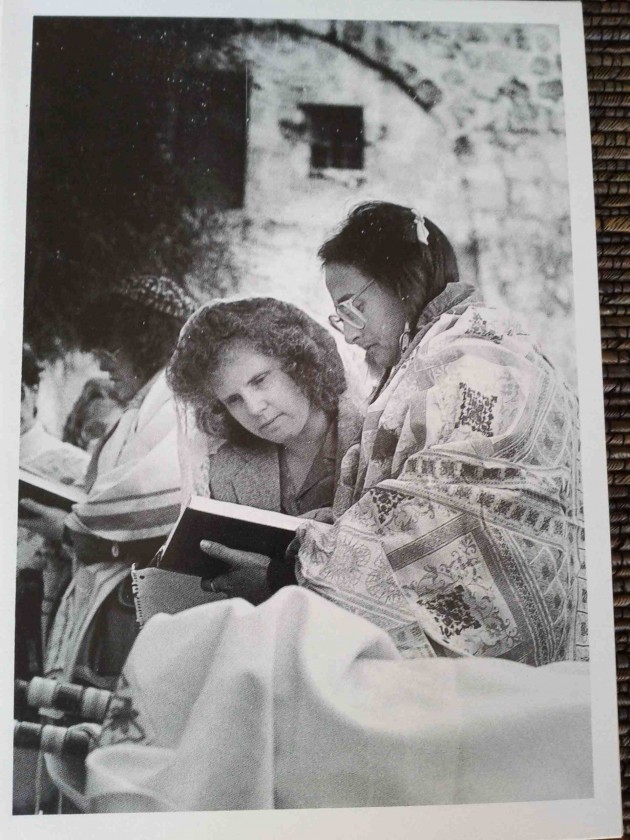
The Wall and I

Historic c Barbara Gingold, Jerusalem.
The Wailing Wall is dead – hopefully.
Not just because the term “Wailing Wall” has long been replaced by “Western Wall” or “Kotel” for the remains of the temple mount in Jerusalem but because of the victory – hopefully not short-lived – of Israeli state justice over Black Hats with political pull.
Separate and hopefully finally equal. In the women’s section of the wall, women can now put on all the ritual accoutrements of prayer traditionally worn by men and can conduct services, read from the Torah without getting hauled off by police for offending some Orthodox males in the men’s section of the wall.
Thank God. Or, more precisely, thank the sanity of the Israeli court system, not to be confused in any way with the beit din, the religious court where women are forbidden to give testimony, let alone judge.
The Wall and I Part One
My own relationship to the Wall goes back to the ‘60s. Heading home to New York after three years in Thailand (Peace Corps teacher then Bangkok Post reporter), I stopped in Israel. I landed in Lod (now Ben-Gurion Airport) on Shabbat – like landing in the bottom of an elevator shaft. Almost no way out.



